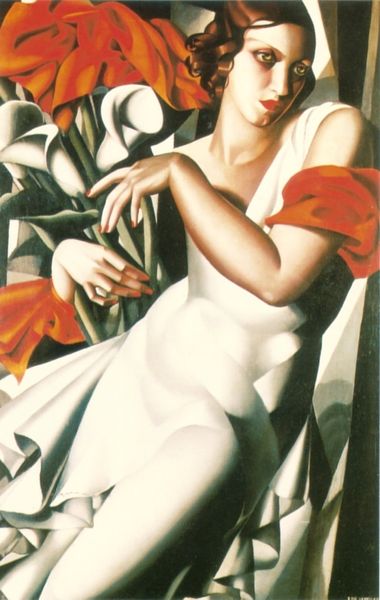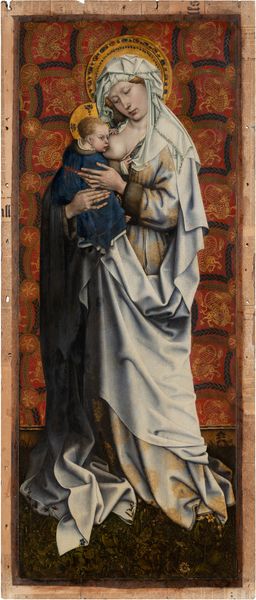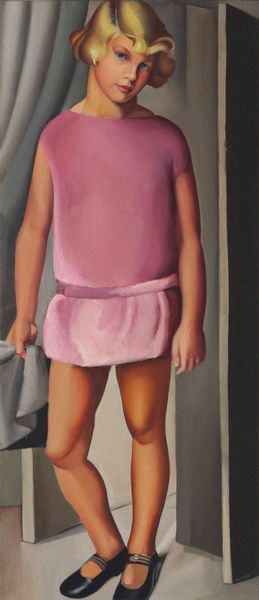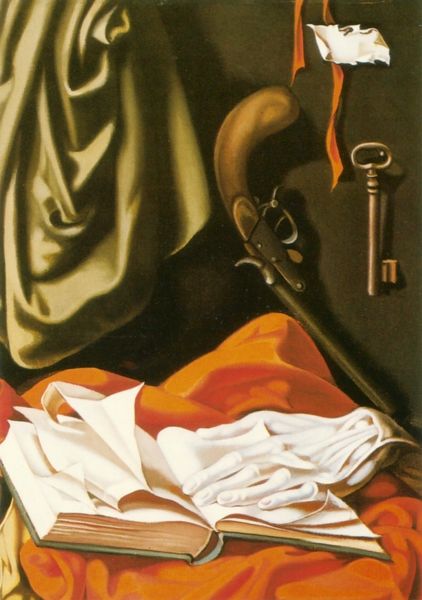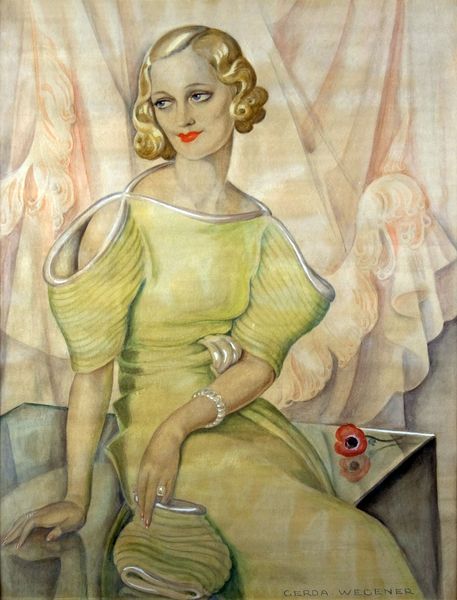
painting, oil-paint
#
portrait
#
art-deco
#
painting
#
oil-paint
#
figuration
#
cityscape
#
academic-art
#
modernism
#
fine art portrait
Copyright: Tamara de Lempicka Estate LLC
Editor: Here we have Tamara de Lempicka's "Kizette on the Balcony" from 1927, an oil painting. The cool color palette gives the piece a slightly detached, melancholic feel, wouldn't you say? What do you make of it? Curator: Absolutely, the coolness isn't just in the colors, but in the implied social commentary. Lempicka paints her daughter in a space that visually evokes both luxury and isolation. Note the geometric cityscape in the background; it screams modernity, industrial progress, even utopian ideals of the interwar period. But is Kizette *part* of that progress? Editor: Hmm, I see your point. She seems almost confined *by* the scene rather than integrated into it. Is Lempicka critiquing something specific about the era? Curator: Precisely. The "Roaring Twenties" were about breaking norms, yet social roles remained rigid, especially for women. Lempicka, though a successful artist *within* that scene, frequently hinted at the constraints within high society and these supposed liberated environments through similar compositions in her other portraits. It's about the gilded cage – the surface of prosperity against the deeper issues of autonomy and expectation. Where does one truly belong within rapid societal change? Editor: So, even amidst the art deco glamour, there's this undercurrent questioning the societal structure of the time? Curator: Exactly! The painting acts as both a celebration *and* critique. What looks beautiful on the surface hints at deeper socio-political currents when we consider its context. Editor: I didn’t pick up on that level of meaning before. It definitely gives the painting much more depth. Thank you. Curator: It’s amazing what history reveals. Now I see the painting in a completely new way.
Comments
No comments
Be the first to comment and join the conversation on the ultimate creative platform.
